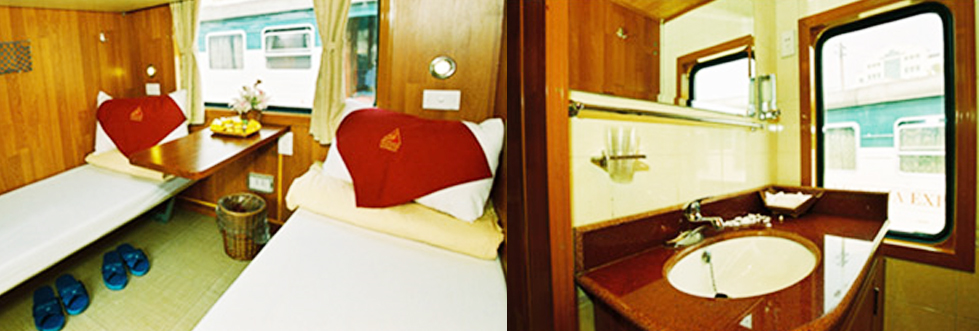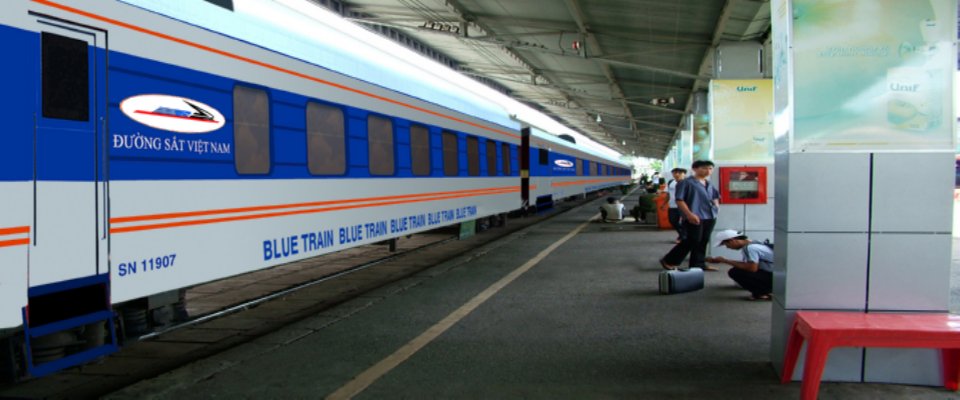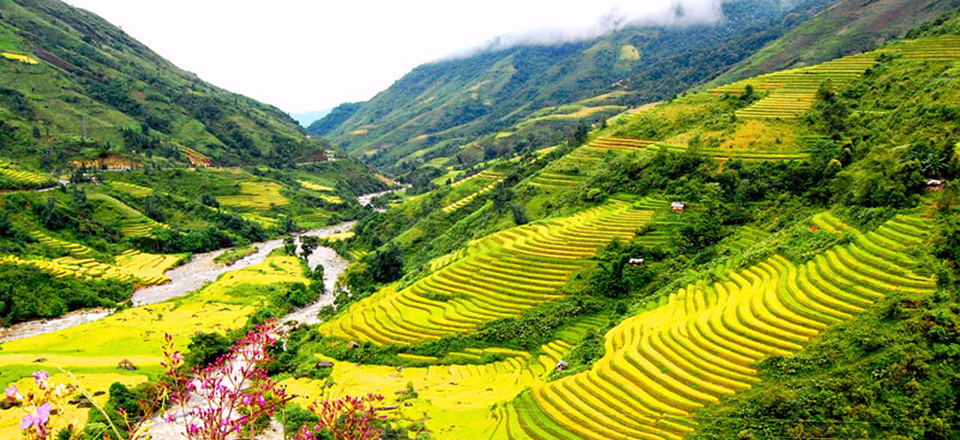Minority in general
There are 54 ethnic groups in Vietnam. The resultant diversity in culture and history of these minorities has created one of the most complex human environments in South East Asia. The main ethic group, the Kinh (Viet), accounts for approximately 87% of the population. The remaining 13%, some 8.5 million people, occupy a variety of midland, upland and highland areas, though are mainly concentrated in the western part of the country where they inhabit two-thirds of the border areas. The ethnic groups vary in size, ranging from over 1 million to less than 200 persons. The ten major groups account for about 85% of the ethnic population. Most minorities are found in equal or greater numbers in southern China, Laos, Cambodia, northern Thailand and Burma.
Facts regarding the origin, distribution, subdivisions and cultural character of the minorities remain uncertain. The classification of ethnic groups varies, in a number of cases Vietnamese, Chinese, French and British designate the same people by different names. The distinction between ethnic groups is made on the basis of linguistic criteria. The minorities are divided into three major language families: Austro-Asiatic, Austronesian and Sino-Tibetan. However, the 54 ethnic groups included many local groups of different denomination with a multitude of dialects. Also, minority groups who share the same language often have distinct thought and behaviour patterns. Thus, a system of classification based on language alone would be imprecise. Groups may be sub-divided by differences in dialect relationships geographical position, altitude of settlement, socio-political structure and traditional dress.
Political & administrative history
Before the French rule (1859-1954) many minorities had developed patterns of
social organisation, either living as rural communes or under a feudal system
where one minority often dominated another.
Under French rule most minorities were required to carry out unpaid labour and were subject to heavy taxes. As with many minorities, the ethnic groups in Sapa were actively opposed to the colonialists, and immigration into Vietnam, particularly of H'mong, continued between 1864 to 1892 to augment guerilla forces made up of mixed minority groups. During the 40 years preceding the 1945 August Revolution the French faced at least seven minority revolts.
Between 1945 and 1975 the government of Vietnam aimed to achieve the co-operation of ethnic groups in the war of reunification. This was attempted by granting them constitutional rights equal to those of the Kinh majority. In the mid 1960s relations between the government and northern minorities improved due to the introduction of an official policy based on the principle of self-government centred on Soviet communist practice for ethnic groups. The government established two Autonomous Regions in the north and north-west of the country led by a People's Council and its administrative body, on which the various minorities in the region were proportionally represented. These Autonomous Regions were abolished in the post-reunification period.
Minority participation in the two
Indo-China wars contributed to their integration in to the political, economic
and life of the country. This is reflected in the delineation of their political
and civil fights as written in the 1981 constitution.
The present government approach to the minorities is through a settlement
programme aimed at further integration the minorities into national life. Ethnic
groups are represented at a country level by the National Assembly. In 1987,
14% of members were minority peoples, in-line with their proportion of the total
population. Other political legislative and executive bodies exist for and with
the participation of minorities, such as the State Committee for Ethnic Affairs
and civil committees at provincial and district level.
Ethnic minorities in the Sapa district
Excluding the Kinh people or ethnic
Vietnamese, eight different ethnic groups are found in Sapa; H'mong, Dao
(pronounced Zao), Tay, Giay (pronounced Zai), Muong, Thai, Hoa (ethnic Chinese)
and Xa Pho (a denomination of the Phu La minority group). However, the last four
groups comprise less than 500 people in total. The population of the district is
estimated at 31,652 (1993) of which 52% are H'mong, 25% are Dao, 15% are Kinh,
5% are Tay and 2% are Giay. Around 3,300 people live in Sapa town, the remainder
are peasant farmers distributed unevenly throughout the district.
The minorities are governed under the same legal and administrative systems as
the Kinh majority. Each province is sub-divided in to a number of districts
which hold a degree of autonomy in local government. The district is further
divided in to communes which have an elected president and small committee
responsible for agricultural and legal issues, amongst other thing. There are 18
communes in the Sapa district, with populations of between 970 and 4,500. These
communes are made up of between two and six villages, each with an elected
leader.
Education and Health
Education and health care are supplied
free to the minorities by the state. Every commune in Vietnam is supposed to
have a primary school, and each of the 550 districts typically has at least one
upper secondary school. However, in Sapa not every commune has a primary school
and school attendance rates by minority child are low since formal education is
not a traditional part of minority culture.
Primary schools provide classes in Vietnamese, basic arithmetic and Vietnamese
culture. These classes are held between three and six mornings each week and are
attended by less than 3% of each commune. Children attending school are able to
participate in household chores or agricultural work during the afternoon. In
the summer months some communes offer similar classes to adults during the
evenings. There is a secondary school in Sapa attended by about 120 minority
children. Pupils board on a full-time or part-time basis depending on family
commitments.
Few communes have trained health staff and most refer serious cases of diseases
such as malaria, dysentery and measles to the hospital in Sapa. Traditional
herbal remedies are primarily used by the minorities, comprising medicinal
plants gathered in the forest. A traditional medicine garden is located near the
bus station in Sapa. This is supported by the Institute for Medicine in Hanoi
and most of the plants are used in Hanoi. Other traditional gardens exist within
province, for example at Lao Ca, for use by local people.
There are very basic water treatment, sewage or waste disposal facilities in the
district, and many communes have no means of dealing with their waste. It is
therefore important that visitors take sensible health precautions, particularly
regarding drinking water. Similarly, it is important not to increase the
existing burden the environment by adding to the waste disposal problem.
Minimize the effects of your visit by disposing of rubbish sensibly and re-use
plastic bottles by sterilizing drinking water if possible. Many locally
produced drinks come in glass bottles which are recycled.
Agriculture
The majority of people in Sapa are
subsistence farmers in forest areas with some traditional practicing “swidden”
agriculture (slash & burn) which has led to much forest clearance. The annual
calendar of events is centred around agriculture.
Rice cultivation is the main economic activity, though production is limited to
one crop per year due to the winter climate being unsuitable for optimal rice
growth. Between March and May, depending on the weather and the number of fields
to be cultivated, rice is planted in the terraced paddy fields. Before planting
the fields are ploughed using buffalo as draught animals. In July weeding of the
rice crops takes place. Between September and October the rice is harvested.
Between February and March maize is planted and crops are harvested between June
and August.
As a result of population growth there is high pressure on existing land. As
rice is limited to only one crop per year and there is limited scope for
expansion of agricultural land the ethnic minorities in Sapa face an annual
deficit in food production. This shortage varies between families but most can
only produce enough to provide for between four and eight months. The poorest
families in each village receive rice provided by the government, usually
surplus stock from the
Mekong Delta.
Livestock is reared to provide food during periods of rice shortage or on
special occasions and also for sale to enable basic necessities to be bought.
Livestock kept by local people includes cattle, water buffalo, pot-bellied pigs,
goats, ducks and chickens.
The minorities also gather natural produce from the forest, both to supplement
their income and for domestic use. These include dead wood for fuel and building
materials, mushrooms, bamboo shoots and ginger. Men from the ethnic groups are
skilled hunters using homemade flintlock rifles, traps, crossbows, knives and
dogs to catch animals in the forest. Hunting is now illegal though animals such
as monkeys are still trapped if they are raiding crops.
Opium cultivation exists in the north-western provinces of Lao Cai, Ha Giang,
Tuyen Quang, Lai Chau and Son La. Addiction in minorities has been reported, as
has the use of opium for medicinal purposes. Opium farming war banned in Vietnam
in 1954, though cultivation for personal use was permitted. In 1986 all
cultivation and possession for sale or personal use became illegal. Punishment
includes fines and prison sentences for re-offenders. To discourage opium
cultivation in Sapa the H'mong have been permitted to cultivate Panax
Pseudo-ginseng within the remaining forest areas. This cash crop is sold to the
Chinese for use in traditional medicines.
There is no traditional delineation of
work between the sexes. Each member of the family carries out jobs to which they
are suited. Men are responsible for heavy work including ploughing, threshing,
building, repairing the house and making agricultural implements. Women are
responsible for planting, weeding, harvesting, food preparation and making
clothes. Children are responsible for tending buffalo, and they, together with
the elderly, help with lighter work and household chores.
Tree Planting
Tree planting programmers exist in Sapa to
provide alternative sources of wood for fuel and building materials. This
alleviates pressure on the remaining natural forest. These reforestation
projects are supported by the Vietnamese government. A number of foreign aid and
development agencies are also contributing to tree planting efforts as an
integrated approach to raising the standard of the ethnic groups.
Protective forest legislation acts as a disincentive to "swidden"
agriculturalists, and those clearing land for cultivation are fined. Economic
lumber species such as Fokienia hodginsii are used in furniture production and
command high prices in Lao Cai ($400/m3) and China ($900/m3) for furniture
production. The trees are cut by local people, though they are only paid a small
fraction of the commercial value of the wood. Economic timber species are
included in the tree planting programmes to reduce the incidence of illegal
logging and provide an alternative source of income to the district.
Sapa Budget Tours
- Sapa Day Tours - Sapa Day Excursions - Day Trips Sapa Vietnam
- Sapa Walk and Bac ha Market
- Sapa Hard Trekking Two
- Sapa Hard Trekking One
- Sapa Medium Trek Two
- Sapa Medium Trek
Sapa Trekking and Adventures
- Fansipan peak conquering VIP tour (3 days - 2 nights)
- Fansipan peak conquering VIP tour (2 days - 1 nights)
- Fansipan peak conquering Deluxe tour (4 days - 3 nights)
- Fansipan peak conquering Deluxe tour (3 days - 2 nights)
- Fansipan peak conquering Deluxe tour (2 days - 1 nights)
- Fansipan peak conquering Standard tour (4 days - 3 nights)
Sapa Cycling Options
- Sapa - Binh Lu - Lai Chau(with biking)
- Sapa - Lao Chai - Ta Van - Ban Ho
- Sapa Biking Tour - Ban Ho Village
- Sapa Biking Tour - Binh Lu - Lai Chau
- SaPa - Bac Ha Market with biking
- Pedalling The Remote Sapa\'s Northwest
Sapa Luxury Holidays
Traditional Minority Discovery Packages
- Green Sapa bus (Hanoi – Sapa)
- Eco Sapa Limousine Van (Hanoi – Sapa)
- Private car Hanoi Sapa
- Hanoi Sapa Private Cabin bus
- Coc Ly market with boat trip
- Cao Son market -boat trip on Chay river- Sapa Tours
Sapa Classic Trips
Northern Mountain Discovery Packages
Topas Ecolodge Sapa tours
- Topas Ecolodge and Market Package 3D/4N
- Topas Ecolodge and Market Package-2D/3N
- Topas Ecolodge and Victoria Sapa Package – 4D/5N
- Topas Ecolodge and Victoria Sapa Package – 3D/4N
- Topas Ecolodge Package – 3D/4N
- Topas Ecolodge Package 2D/3N











